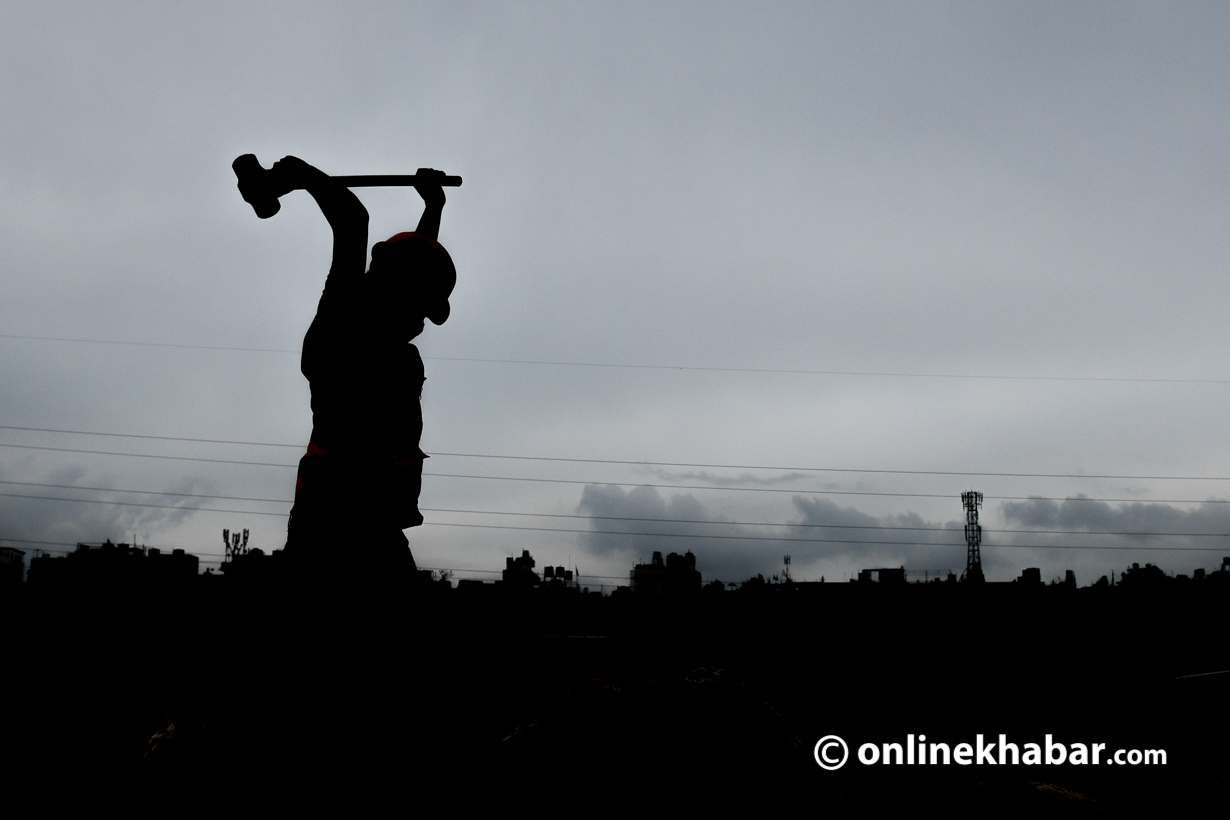
Nestled beneath the towering peaks of the Himalayas, Nepal, a nation relentlessly pursuing prosperity and progress, finds itself increasingly bound by a growing external debt. For decades, foreign loans have been championed as the essential fuel for development, bridging crucial financial gaps and making ambitious infrastructure projects and vital social programs possible. Borrowing in foreign currency from non-resident creditors often seems appealing, promising less crowding-out of private investment and reduced inflationary pressures. Yet, beneath this seemingly beneficial surface, a complex and precarious reality is taking shape. Nepal’s increasing dependence on foreign loans, while appearing to propel it forward, carries hidden costs and insidious risks. These threats could ensnare the nation in a debilitating debt spiral, jeopardizing its hard-won economic gains and potentially eroding its future sovereignty.
Nepal has long been the recipient of substantial grants and official development assistance (ODA) due to its status as a least developed nation. These loans largely come from major international financial institutions like the World Bank and the Asian Development Bank, as well as bilateral partners such as China and India.
Rising loan pressure
Previously, this assistance was provided for free or at extremely low interest rates (concessional loans) as a part of Least Developed Country. It is important to remember that Nepal will officially leave the LDC category in 2026. With the improvement to Developing Country, this help’s shape is probably going to change significantly. This merely indicates that, as a nation, there will be less money available at zero or extremely low interest rates. The money required for development may have to be paid at higher interest rates than previously due to the anticipated increase in loan interest rates affecting development initiatives like climate risk mitigation. In addition, Nepal will face more pressure to fund initiatives in important social areas including infrastructure development, education, and health as grants and concessional loans become less available.
The Ministry of Finance has also declared that the interest rate on loans from the World Bank and Asian Developemnt Bank to Nepal has been raised to 1.5 percent from the previous 0.75 percent. With effect from this July, it appears that the World Bank has raised the interest rate on loans it has been making to Nepal. Furthermore, it has been made known that the World Bank has shortened the loan repayment period in addition to raising the interest rate. According to current reports, the loan’s maturity period has also been shortened from 24 to 30 years which was previously 40 and 38 years.
This accumulation isn’t just happening; it’s driven by several factors: ambitious development goals outlined in national plans, frequent cost overruns in large-scale projects due to inefficiencies or unforeseen challenges, inadequate project management, and unfavorable currency fluctuations, which automatically inflate the local currency value of foreign-denominated debt. Even without new borrowing, just a single percentage point depreciation of the Nepali Rupee against the US Dollar can add billions of rupees to the debt burden.
In the previous fiscal year, Nepal’s national debt rose by Rs 231.8 billion, now as per the data of June 2024 it has raised to 243.8 billion. The current national debt of Nepal is Rs 264.9 billion including a foreign debt of Rs 138.2 billion. This escalating debt accumulation poses several serious concerns for Nepal, creating a real risk of trapping the country in a self-reinforcing debt spiral. An ever-increasing share of the government’s annual revenue is now being redirected towards debt servicing—that is, paying off the principal and interest. This “crowding out” effect can significantly stunt domestic growth, as vital public investments are starved, and citizens inevitably face the consequences of underfunded services.
Looking at the trend of external debt servicing, it’s clear that resources that could have been used for developing social sectors are instead being consumed by debt repayments—a discouraging practice from a development standpoint. For instance, the amount spent on external debt servicing was Rs. 23 million in FY 1979/80, which then jumped to Rs. 1.12 billion in FY 1989/90, a substantial increase in just a decade. By FY 2000/01, this debt servicing had ballooned to Rs. 6.20 billion, nearly two hundred and seventy times the amount from FY 1979/80. This significant rise in the debt burden largely stems from the government’s increased investment needs for infrastructure building, macroeconomic adjustments, and structural reforms, which foreign creditors have eagerly supported, especially following the liberalized economic policies after the restoration of multiparty democracy in 1990.
Debt trap warning

Beyond the raw numbers, relying heavily on foreign loans often brings a subtle yet significant erosion of policy space and national sovereignty. Lenders, particularly large multilateral institutions, frequently attach wide varieties of conditionalities to their loans from requiring specific economic policy reforms (like privatization, fiscal austerity, or trade liberalization) to demanding improvements in governance or adherence to environmental safeguards. This can result in development agendas being shaped more by external mandates than by the country’s own needs. Nepal’s ability to independently chart its economic course becomes constrained, as failing to meet agreed-upon conditionalities can lead to delayed disbursements or even loan cancellations.
A heavy debt burden dramatically increases Nepal’s vulnerability to external shocks. Global economic downturns, rising international interest rates, and geopolitical instabilities can have magnified negative impacts. For example, a hike in global interest rates directly translates into higher debt servicing costs for loans with floating rates. A decline in remittances, which are a crucial source of foreign exchange for Nepal, or a drop in foreign direct investment (FDI) can further worsen a foreign currency crunch, making it incredibly challenging to acquire the foreign currency needed for debt repayments.
The persistent concern of falling into an unsustainable debt trap looms large. If economic growth rates consistently fail to outpace the rate of debt accumulation and the cost of debt servicing, Nepal could find itself caught in a vicious cycle where new loans are primarily taken not for new development, but simply to repay existing obligations. This phenomenon, often called a “debt overhang,” discourages further investment, both domestic and foreign, as potential investors perceive a higher risk due to the government’s overwhelming financial commitments. Moreover, the long-term nature of these loans raises significant intergenerational equity concerns. The decisions made by the current generation to borrow extensively place a heavy financial burden on future generations, who will inherit the obligation to repay today’s debts, potentially limiting their fiscal space for their own development priorities and curbing their economic opportunities.
Transparency and accountability in how borrowed funds are used represent yet another critical hidden cost. Reports and observations frequently highlight issues such as project delays, significant cost overruns, and sometimes even allegations of corruption in foreign-funded projects. When borrowed money isn’t utilized efficiently or effectively, or worse, is siphoned off, the intended developmental impact is severely diluted, yet the debt obligation stubbornly remains.
Several projects in Nepal clearly illustrate the challenges and hidden costs associated with foreign loans. For instance, the Melamchi Drinking Water Project, the notoriously long-running project, intended to supply drinking water to the Kathmandu Valley, faced decades of delays and massive cost escalations, partly due to mismanagement and contractor disputes. These inefficiencies inflated the development cost and deepened the debt burden without delivering commensurate benefits. Pokhara Regional International Airport, constructed with a $216 million loan from the Export-Import (EXIM) Bank of China, this airport project has sparked considerable debate regarding its financial viability and the actual return on investment, especially given lower-than-anticipated traffic. This raises serious questions about the prudence of borrowing for projects with uncertain commercial success. School Sector Transformation Program (SSTP), while undoubtedly beneficial, the Government of Nepal and the World Bank signed a $120 million concessional loan (from IDA) and a $19.7 million grant in May 2023 to improve foundational skills, address learning losses, and enhance equity in the school sector. While this represents a positive investment, the increasing reliance on such loans for social sectors underscores the growing fiscal strain. Commercial Bank Foreign Borrowing, Nepali commercial banks have significantly increased their reliance on foreign borrowing, collectively securing Rs 59.17 billion from a dozen international financial institutions over the past five years. This trend was sparked by a Nepal Rastra Bank (NRB) directive allowing banks to borrow up to 100 percent of their primary capital from foreign sources, primarily driven by a persistent shortage of loanable funds and severe liquidity crunches in the domestic market. While this does augment credit supply and focuses on productive sectors, it also carries significant risks from exchange rate fluctuations and adds to the overall external debt burden.
Rethinking development financing
Nepal is currently navigating its foreign borrowing with caution, prioritizing grants over loans, particularly from initiatives like China’s Belt and Road Initiative (BRI). The nation aims for “soft” or “concessional loans” with an interest rate cap of 2 percent for BRI projects, remaining wary of the higher rates and shorter payback periods typically associated with commercial loans. This prudent approach is fueled by concerns over debt sustainability, as Nepal’s debt-to-GDP ratio has climbed from 25.65 percent in 2015-16 to 40.53 percent in 2021-22. While still within a comfortable range compared to the 60 percent benchmark for developing countries, the government remains acutely aware of past economic strains, such as the 63.9 percent debt-to-GDP ratio during the Maoist insurgency in 2001-02.
To navigate this treacherous landscape and prevent a full-blown debt spiral, Nepal must implement a robust and comprehensive debt management strategy alongside broader economic reforms. Firstly, the absolute necessity of strengthening domestic revenue mobilization cannot be overstated. This means broadening the tax base, improving tax compliance, modernizing tax administration, and actively exploring new revenue streams to gradually lessen the reliance on external borrowing for both recurrent expenditures and capital projects.
Secondly, a critical shift is needed towards prioritizing productive investments. Borrowed funds must be meticulously directed towards projects that promise high economic returns, clear socio-economic benefits, and strong potential for export generation and job creation. Rigorous feasibility studies, transparent procurement processes, and efficient project implementation are paramount to ensure that every borrowed rupee yields maximum benefit. Examples of such projects funded by foreign loans include the Kali Gandaki “A” Hydroelectric Project, the Electricity Supply Reliability Improvement Project, and the Modernization of Rani Jamara Kulariya Irrigation Project.
Thirdly, diversifying funding sources is crucial. While foreign loans will likely remain a component of Nepal’s development financing, actively attracting more foreign direct investment (FDI) into key sectors, fostering genuine public-private partnerships (PPPs), and channeling the immense potential of remittances into productive investments rather than primarily consumption, can significantly reduce the sole reliance on debt. This requires creating a more attractive investment climate, streamlining regulatory processes, and ensuring political stability.
Finally, responsible debt management must be institutionalized. This includes developing and strictly adhering to a comprehensive medium-term debt strategy that sets prudent borrowing limits, rigorously assesses debt sustainability risks, and ensures transparent reporting of all debt obligations. Negotiating favorable loan terms—seeking concessional rates, longer grace periods, and flexible repayment schedules—remains vital. Above all, strengthening governance, promoting accountability, and vigorously combating corruption are fundamental pillars.
In conclusion, Nepal’s journey towards development, while undeniably propelled by foreign loans, is increasingly shadowed by the hidden costs of this growing reliance. The allure of readily available capital must be carefully weighed against the significant fiscal strain, the erosion of policy space, increased vulnerability to external shocks, and the intergenerational burden of debt. A potential debt spiral is not merely an academic concern but a tangible threat to Nepal’s long-term economic stability and sovereign future. Moving forward, Nepal must embrace a paradigm shift: one that champions robust domestic resource mobilization, strategic and productive investments, diversified financing, and unwavering commitments to transparency and good governance. Only by prudently balancing its development aspirations with fiscal responsibility can Nepal ensure that the loans taken today truly contribute to a prosperous and self-reliant future, rather than becoming an enduring economic liability.

























